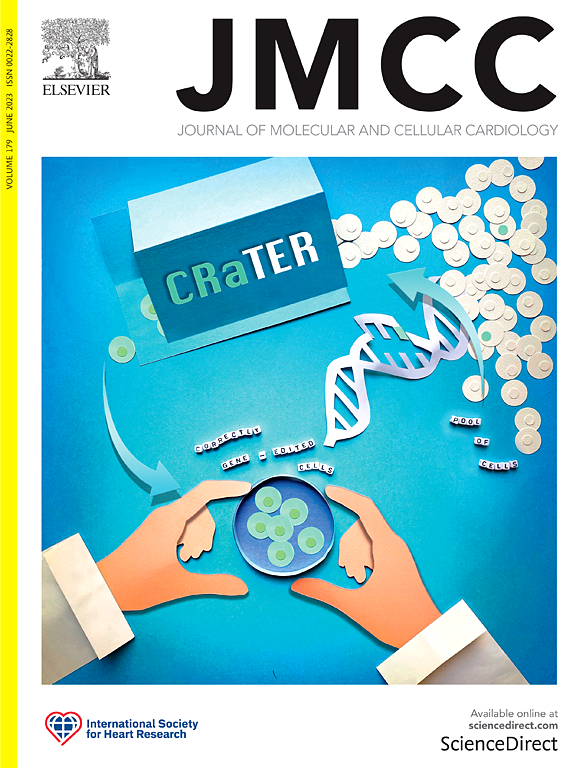Circadian influences on sudden cardiac death and cardiac electrophysiology
IF 4.9
2区 医学
Q1 CARDIAC & CARDIOVASCULAR SYSTEMS
引用次数: 0
Abstract
Cardiologists have analyzed daily patterns in the incidence of sudden cardiac death to identify environmental, behavioral, and physiological factors that trigger fatal arrhythmias. Recent studies have indicated an overall increase in sudden cardiac arrest during daytime hours when the frequency of arrhythmogenic triggers is highest. The risk of fatal arrhythmias arises from the interaction between these triggers such as elevated sympathetic signaling, catecholamine levels, heart rate, afterload, and platelet aggregation and the susceptibility of the heart (myocardial substrate) to them. A healthy myocardial substrate has structural and functional properties that protect against arrhythmias. However, individuals with cardiovascular disease often exhibit structural and electrophysiological alterations in the myocardial substrate that predispose them to sustained lethal arrhythmias. This review focuses on how day-night and circadian rhythms, both extrinsic and intrinsic, influence the protective properties of the myocardial substrate. Specifically, it explores recent advances in the temporal regulation of ion channel gene transcription, drawing on data from comprehensive bioinformatics resources (CircaDB, CircaAge, and CircaMET) and recent RNA sequencing studies. We also examine potential mechanisms underlying the temporal regulation of mRNA expression and the challenges in linking rhythmic mRNA expression to corresponding changes in protein levels. As chronobiological research in cardiology progresses, we anticipate the development of novel therapeutic strategies to enhance the protective properties of the myocardial substrate to reduce the risk of fatal arrhythmias and sudden cardiac arrest.
心脏性猝死和心脏电生理的昼夜节律影响。
心脏病专家分析了心脏性猝死发生率的日常模式,以确定引发致命性心律失常的环境、行为和生理因素。最近的研究表明,在诱发心律失常的频率最高的白天,心脏骤停的总体增加。致死性心律失常的风险源于这些触发因素之间的相互作用,如交感神经信号升高、儿茶酚胺水平、心率、后负荷和血小板聚集,以及心脏对它们的易感性(心肌底物)。健康的心肌底物具有防止心律失常的结构和功能特性。然而,患有心血管疾病的个体经常表现出心肌底物的结构和电生理改变,使他们易于发生持续的致命性心律失常。这篇综述的重点是昼夜节律和昼夜节律,无论是外在的还是内在的,如何影响心肌底物的保护特性。具体而言,它利用综合生物信息学资源(CircaDB, CircaAge和CircaMET)和最近的RNA测序研究的数据,探讨了离子通道基因转录时间调控的最新进展。我们还研究了mRNA表达时间调控的潜在机制,以及将有节奏的mRNA表达与相应的蛋白质水平变化联系起来的挑战。随着心脏病学中时间生物学研究的进展,我们期待新的治疗策略的发展,以增强心肌底物的保护特性,以降低致命性心律失常和心脏骤停的风险。
本文章由计算机程序翻译,如有差异,请以英文原文为准。
求助全文
约1分钟内获得全文
求助全文
来源期刊
CiteScore
10.70
自引率
0.00%
发文量
171
审稿时长
42 days
期刊介绍:
The Journal of Molecular and Cellular Cardiology publishes work advancing knowledge of the mechanisms responsible for both normal and diseased cardiovascular function. To this end papers are published in all relevant areas. These include (but are not limited to): structural biology; genetics; proteomics; morphology; stem cells; molecular biology; metabolism; biophysics; bioengineering; computational modeling and systems analysis; electrophysiology; pharmacology and physiology. Papers are encouraged with both basic and translational approaches. The journal is directed not only to basic scientists but also to clinical cardiologists who wish to follow the rapidly advancing frontiers of basic knowledge of the heart and circulation.

 求助内容:
求助内容: 应助结果提醒方式:
应助结果提醒方式:


